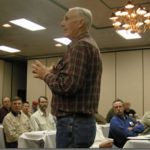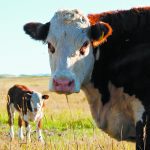Options that producers can use to make it a more low-stress experience include nose flaps and fence-line separation
Traditional weaning methods are traumatic for calves and cows but now there are better ways to wean besides rounding up the herd, sorting the calves and taking the cows away. Calves are stressed when suddenly deprived of milk and mama at the same time, and the trauma of losing mom can be even harder than […] Read moreStories by Heather Smith Thomas

Vaccination program must assess risk
Recommendations made by specialists may not take into account the level of risk that individual cattle ranches face
Timely vaccination of cattle can build immunity before they are exposed to illness. A calf acquires initial antibodies from colostrum, but once this passive immunity wanes, the calf’s own immune system must be stimulated with appropriate vaccinations to develop its defenses. Dr. Eugene Janzen, professor emeritus at the University of Calgary, says the biggest difficulty […] Read more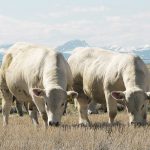
Bulls require special winter care
A veterinarian advises producers to ensure that adequate bull body condition is maintained during the cold months
Bulls should be separated from the cow herd after breeding season so they can regain body condition and then be kept in shape over winter in readiness for their next duties. Dr. Robert Larson, professor in production medicine at Kansas State University, says it’s crucial to maintain adequate bull body condition. “As we go into […] Read more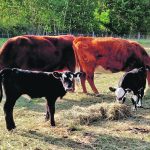
Mixing it up can yield breeding advantages
The science behind hybrid vigour has been known for a long time, but producers are encouraged to tap into its potential
Crossbred cattle have known advantages over purebreds due to hybrid vigour. Dr. Reynold Bergen, science director at the Beef Cattle Research Council, says hybrid vigour, also called heterosis, is the degree to which progeny outperform the average of the two parents. “If breed A averages 100 and breed 2 averages 110 for a certain trait, […] Read more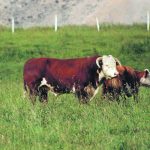
Bull selection: should it be maternal or terminal sires?
If using terminal bulls, just sell all the calves, but if using maternal bulls and keeping half, good marketing is essential
When buying a new bull, most ranchers have specific goals and are seeking specific traits in the offspring. Travis Olson, a seed-stock breeder near Athabasca, Alta., has been raising Angus bulls for years and says there are several tools for choosing the right bull for the purpose. “All ranchers have slightly different views on what […] Read more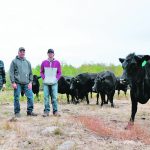
Breeders say demand growing for Wagyu beef
Meat marbling is a significant selling point, but producers also point to the breed’s vigour, longevity, fertility and docility
Adrienne Herron has been raising Wagyu cattle in Alberta’s Red Deer County for about 15 years. She started with three unregistered purebred orphans from a local herd. “Then I bought purebreds from Marchi Ranches in Montana, and now have registered fullbloods I sell to commercial cattle producers,” she says. Heifers bred to Wagyu bulls don’t […] Read more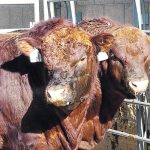
Indexes helpful tool for commercial producers
Expected progeny differences come with a wide range of numbers, while indexes simplify many factors into one number
Every breed has its own indexes, and they work in similar ways. The important ones in the Canadian Hereford Association, for instance, are the Maternal Productivity Index (MPI) and the Feedlot Merit Index (FMI). The MPI for the Canadian Hereford Association, which was created in 2000 by Agriculture Canada, was designed to combine genetic factors […] Read more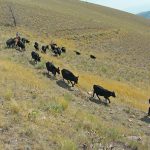
Low stress is best when moving cow-calf pairs
The separation of pairs on the trail often results in animals bawling and leaving the herd seeking their mother or calf
It’s sometimes easier to trail cattle rather than haul them to a new pasture, depending on the distance involved. Some people use quads but in many situations, cattle are moved using horseback riders, especially if the herd is being moved across open country with difficult terrain. When cows with calves are trailed, they often get […] Read more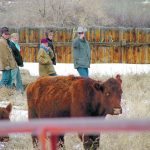
Bud Williams left low-stress stockmanship legacy
Producers taught to learn to ‘read’ what an animal is saying and change position so it wants to go in the desired direction
Now and then, someone comes along with ideas that change the way people do things and sometimes even change an industry. Bud Williams was that kind of person. His unique methods of handling cattle are becoming known and adapted by dairy and beef producers because they are easier on the animals and the people who […] Read more